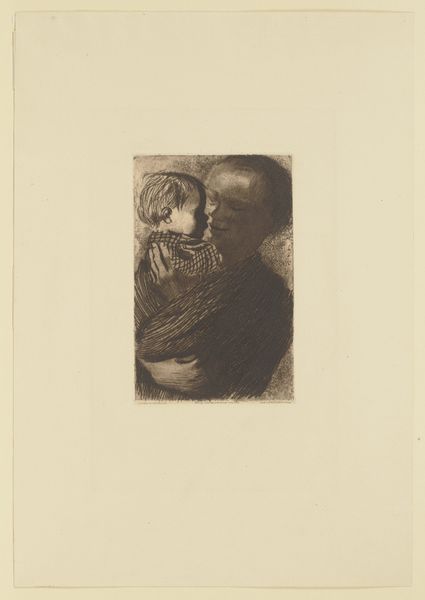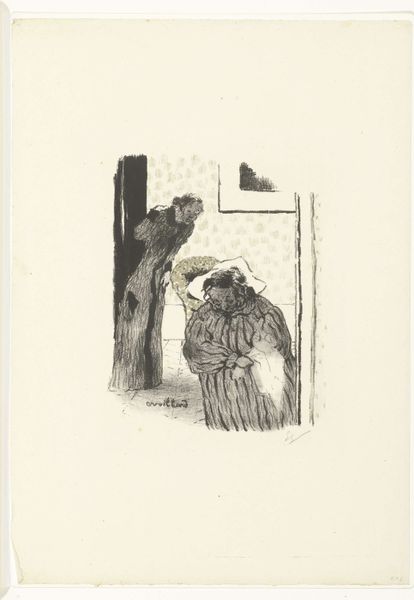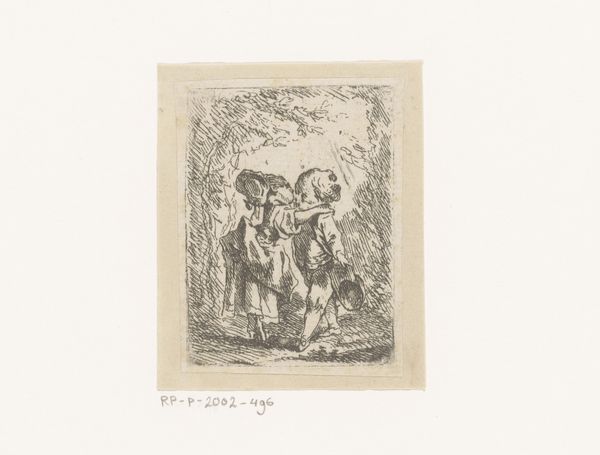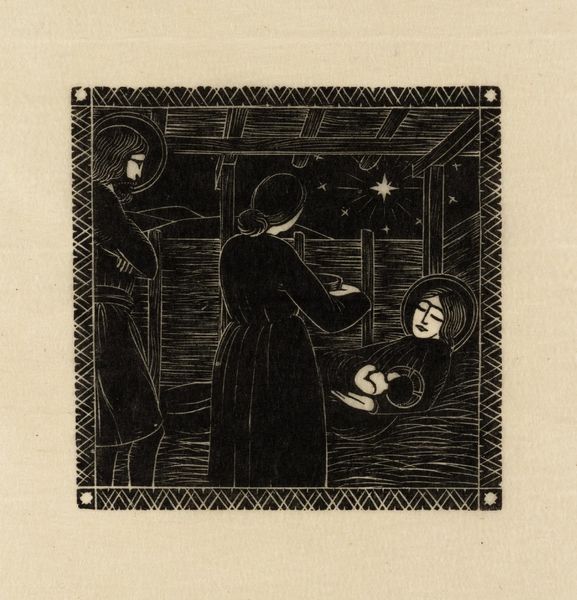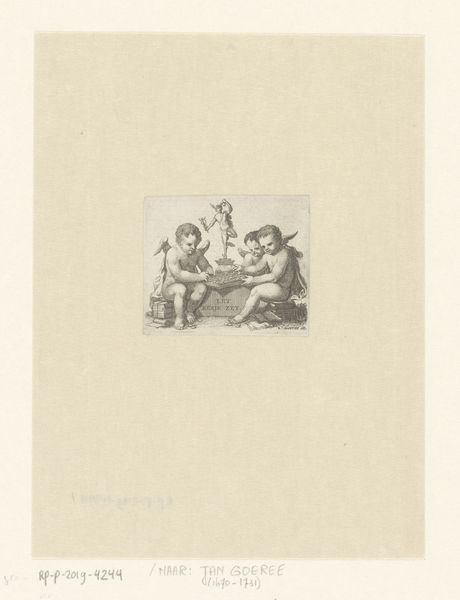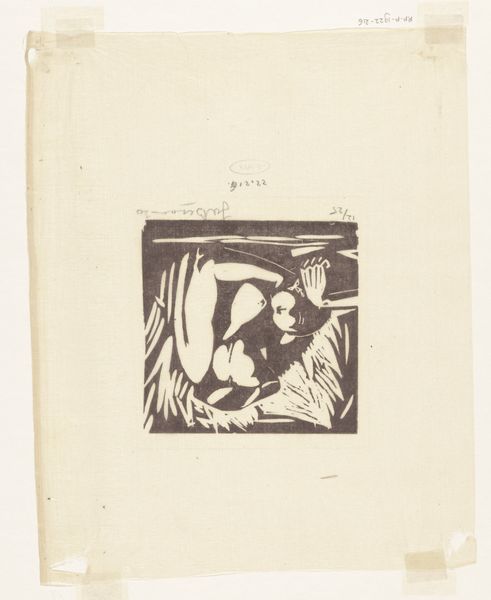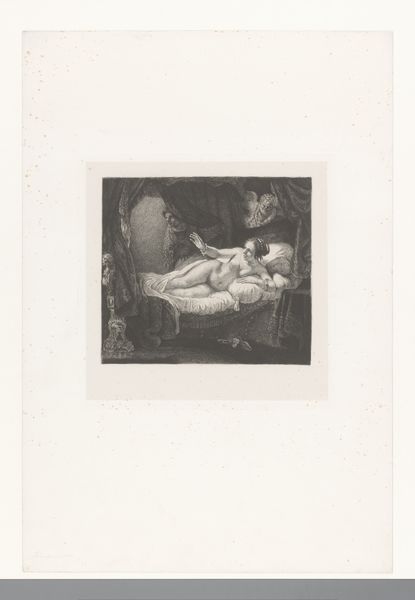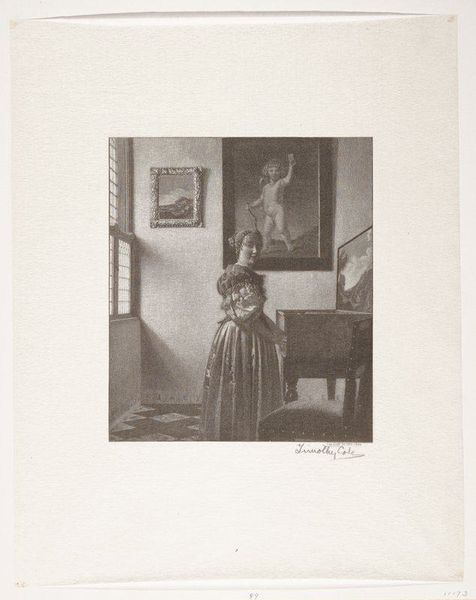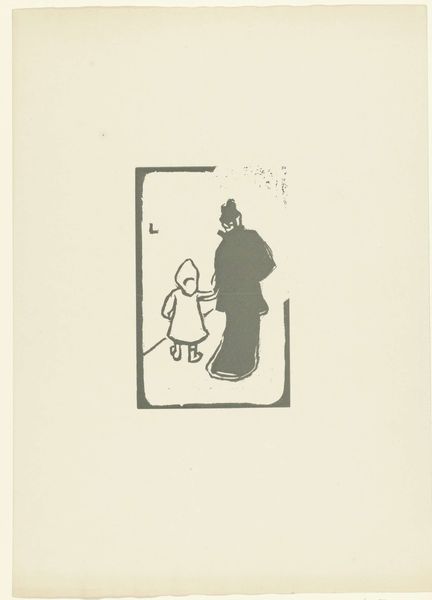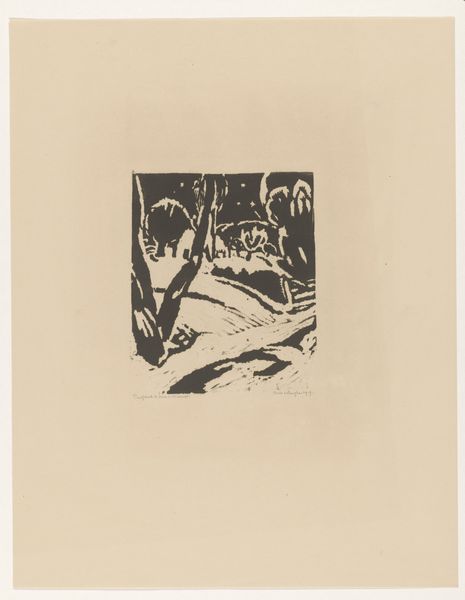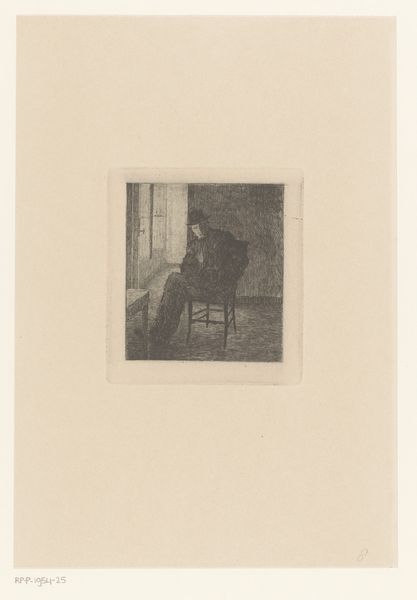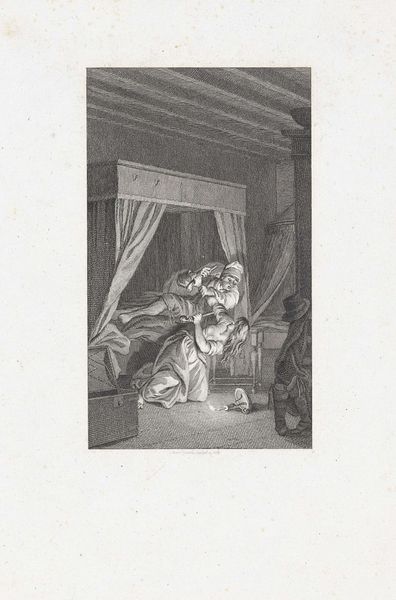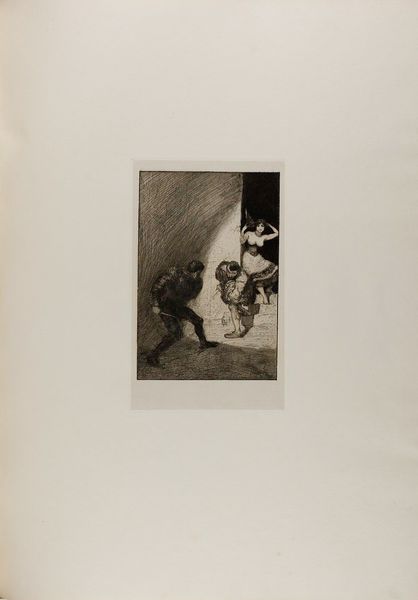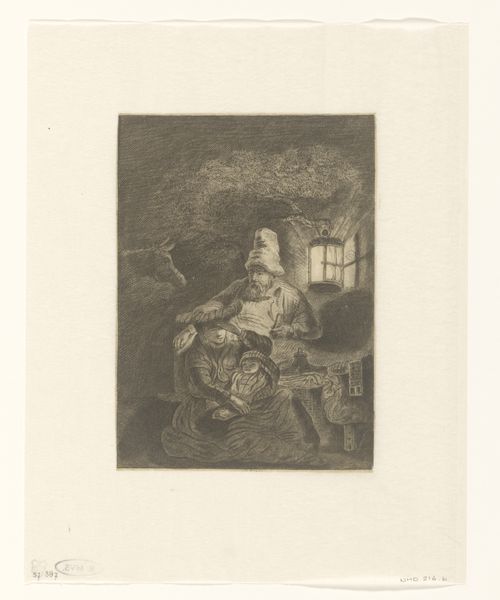
Illustratie bij gedicht in dichtbundel Sagesse van Paul Verlaine Possibly 1895 - 1898
0:00
0:00
drawing, print, ink, woodcut
#
drawing
#
narrative-art
# print
#
figuration
#
ink
#
woodcut
#
symbolism
Dimensions: height 74 mm, width 60 mm, height 376 mm, width 281 mm
Copyright: Rijks Museum: Open Domain
Curator: This ink and woodcut print is entitled "Illustration for a Poem in Sagesse by Paul Verlaine," likely completed between 1895 and 1898, created by the French artist Maurice Denis. Editor: Oh, right away I get this cloistered feeling, like stepping into a dream. So much contained darkness. Is it just me, or does this capture the mood of intense introspection? Curator: Precisely! The Sagesse poems themselves explore themes of spiritual reflection and repentance after Verlaine's turbulent life. The imagery in Denis’ illustrations is intrinsically linked to Verlaine's journey. Notice the symbolism that positions this in direct relation to early christian icons and devotional works. Editor: The halo really gives it away, doesn’t it? Yet there’s something deeply private about this illustration. Not just piety on display, it feels almost voyeuristic looking in on something sacred, a deeply intimate experience between the figures here, the dark one seemingly in anguish before the enlightened one. Curator: You’ve nailed an essential element. The Symbolist movement, of which Denis was a leading figure, often turned inward, exploring the emotional and spiritual states of humanity. Verlaine had been to prison for shooting at Rimbaud. The illustrations Denis completed emphasize a sense of penitence, piety, and solace, characteristic of religious conversion in Verlaine's verse, all concepts strongly echoed through the aesthetic constraints that symbolism so emphatically encouraged. Editor: Ah, of course! Restraints breeding this claustrophobic feeling... fascinating. Almost like seeing feelings illustrated directly, no fluff. This is raw emotion visualized. Thank you for pointing out that connection, it's all coming to life now for me. Curator: You're most welcome. I find it continuously revealing how socio-political and biographical contexts impact an artwork’s form and affect on viewers over the decades. Editor: Absolutely. What an exercise in capturing raw feeling through constraint. Definitely makes you think.
Comments
No comments
Be the first to comment and join the conversation on the ultimate creative platform.
